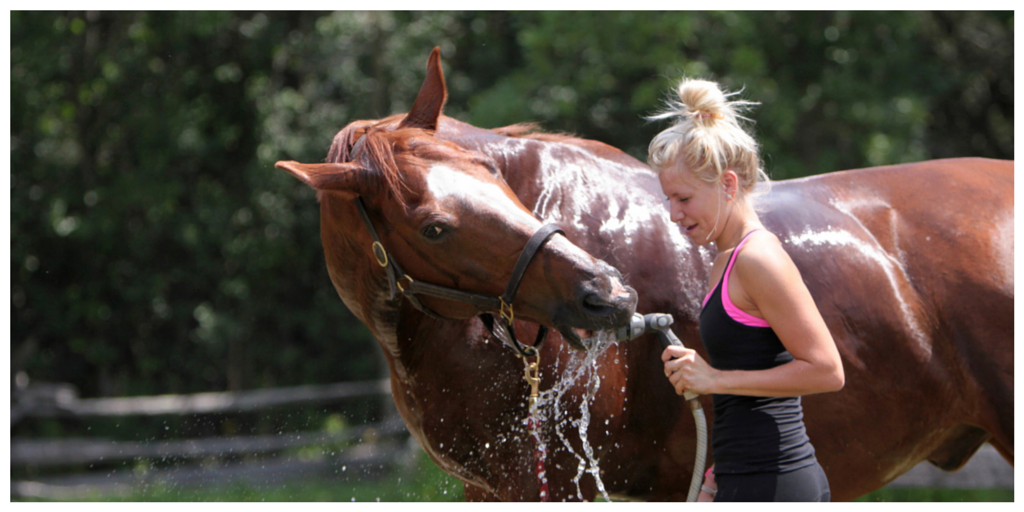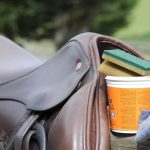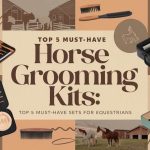Grooming a horse is an essential part of equestrian care. It strengthens the bond between horse and owner while ensuring the horse’s health.
For women involved in horse care, understanding the best grooming practices is vital. Whether you’re new to horse grooming or seeking to refine your skills, this guide offers valuable insights tailored to your needs. From brushing techniques to the right tools, we’ll cover everything you need to know.
Grooming not only keeps your horse looking its best but also helps you detect health issues early. Ready to enhance your grooming routine? Let’s dive into some essential tips that will make the process smoother and more enjoyable.

Credit: www.mannapro.com
Introduction To Horse Grooming
Horse grooming is an essential routine for every horse owner. It keeps your horse healthy and happy. Grooming also strengthens the bond between you and your horse. For women, it provides a calming and rewarding experience.
Importance Of Grooming
Regular grooming removes dirt and sweat from your horse’s coat. This helps prevent skin infections. It also allows you to check for injuries or parasites. Clean horses feel more comfortable and perform better.
Benefits For Both Horse And Rider
Grooming benefits the horse by improving circulation and stimulating muscle tone. It also gives you a chance to connect with your horse. This builds trust and mutual respect. For the rider, grooming provides physical exercise and stress relief. It is a peaceful activity that helps you relax.
Essential Grooming Tools
Grooming your horse is vital for their health and happiness. Having the right tools makes the process easier. In this section, we will discuss the essential grooming tools every woman needs for horse care.
Brushes And Combs
Proper brushes and combs are crucial for maintaining your horse’s coat. They help remove dirt, debris, and loose hair.
- Curry Comb: This comb is used to loosen dirt and hair. It works well on the body.
- Dandy Brush: Ideal for removing heavy dirt, the dandy brush has stiff bristles.
- Body Brush: Use this soft-bristled brush for a smooth, shiny coat.
- Mane and Tail Comb: This comb helps to detangle and keep the mane and tail smooth.
Hoof Care Tools
Keeping your horse’s hooves in good condition is essential. Proper hoof care prevents injuries and infections.
- Hoof Pick: This tool is used to clean out the hooves. It removes dirt, stones, and debris.
- Hoof Brush: After using the hoof pick, this brush helps to clear away any remaining dirt.
- Hoof Oil: Apply hoof oil to keep the hooves moisturized and healthy.
By using these essential grooming tools, you can ensure your horse looks and feels their best. Proper grooming is a key part of horse care and helps build a strong bond between you and your horse.

Daily Grooming Routine
Taking care of your horse daily is essential. It keeps them clean and healthy. A daily grooming routine helps build a strong bond between you and your horse. It also allows you to check for any injuries or issues. Follow this simple guide for an effective daily grooming routine.
Brushing Techniques
Brushing your horse is crucial. It removes dirt and loose hair. Use a curry comb first. Move it in small circles over the horse’s body. This loosens dirt and stimulates the skin. Be gentle on sensitive areas.
Next, use a stiff brush. Brush in the direction of hair growth. This removes the dirt brought up by the curry comb. Finally, use a soft brush. This gives the coat a nice shine. Pay extra attention to the mane and tail. Use a detangler if needed.
Cleaning The Hooves
Cleaning the hooves is very important. It prevents infections and keeps the hooves healthy. Use a hoof pick to remove dirt and stones. Start from the heel and move towards the toe. Be careful not to hurt the frog, the soft part of the hoof.
Check for any signs of thrush or cracks. If you notice any issues, contact your vet. Also, make sure the shoes are in good condition. Regular hoof cleaning ensures your horse stays comfortable and healthy.
| Grooming Task | Tools Needed | Frequency |
|---|---|---|
| Brushing | Curry Comb, Stiff Brush, Soft Brush | Daily |
| Hoof Cleaning | Hoof Pick | Daily |
| Mane and Tail Care | Detangler (if needed) | As needed |

Credit: www.farnam.com
Maintaining A Healthy Coat
Maintaining a healthy coat for your horse is essential. A shiny, smooth coat reflects good health. Regular grooming can help achieve this. Women can follow simple tips to ensure their horse’s coat stays healthy.
Bathing Your Horse
Bathing your horse is important. Use a mild horse shampoo. Wet the horse’s coat thoroughly. Apply the shampoo and work it into a lather. Gently scrub the horse’s body. Rinse off all the soap. Ensure no residue is left. Dry the horse with a clean towel. This prevents skin infections.
Dealing With Shedding
Shedding can be a challenge. Use a shedding blade or curry comb. These tools help remove loose hair. Brush the horse daily during shedding season. This keeps the coat clean and reduces hair mess. Ensure you are gentle to avoid hurting the horse’s skin.
Mane And Tail Care
Taking care of a horse’s mane and tail is crucial. It ensures your horse looks and feels its best. The process involves detangling, cleaning, and sometimes braiding. Each step plays a vital role in maintaining a healthy and beautiful mane and tail.
Detangling Tips
Detangling a horse’s mane and tail can be a challenge. Start by using a wide-tooth comb or your fingers. This helps to gently remove knots. Avoid using harsh brushes, as they can break hair.
- Work in small sections
- Use detangling spray for stubborn knots
- Be patient and gentle
Regular grooming prevents tangles from forming. It also keeps the hair smooth and shiny. A consistent routine is key.
Braiding Techniques
Braiding a horse’s mane and tail can be both functional and decorative. There are various techniques to try, depending on the occasion.
| Technique | Description |
|---|---|
| Basic Braid | Simple and quick. Ideal for daily use. |
| French Braid | Elegant and secure. Great for shows. |
| Fishtail Braid | Complex but stunning. Perfect for special events. |
- Start with a clean, detangled mane or tail.
- Divide the hair into sections.
- Braid each section tightly and evenly.
Braiding helps manage long hair and keeps it clean. It also protects the hair from damage.
Skin And Hoof Health
Maintaining your horse’s skin and hoof health is crucial. Healthy skin and hooves ensure your horse’s comfort and performance. They also contribute to the overall well-being of your equine companion. This section provides essential tips for recognizing and preventing common skin and hoof issues.
Recognizing Skin Issues
Check your horse’s skin regularly. Look for redness, swelling, or sores. These can be signs of irritation or infection. Pay attention to areas under the tack. These spots often hide problems. Note any unusual hair loss or bumps. Early detection helps in addressing issues promptly.
Preventing Hoof Problems
Hoof care is vital. Clean your horse’s hooves daily. Remove any dirt or stones. This prevents infections and abscesses. Regular trimming by a farrier is essential. It keeps the hooves in good shape. Check for cracks or splits. These can lead to serious problems. Use hoof oil to keep them moisturized.
Seasonal Grooming Tips
Horse grooming needs change with the seasons. Proper care ensures your horse stays healthy and happy all year round. Below are some essential tips for grooming your horse in winter and summer.
Winter Care
Winter can be tough on horses. The cold weather affects their coat, skin, and hooves. Regular grooming helps maintain their health during this season.
- Brush daily: Use a stiff brush to remove mud and dirt. This keeps their coat clean and prevents skin issues.
- Check hooves: Ice and snow can get packed in hooves. Clean them daily to avoid hoof problems.
- Blanketing: If your horse is clipped, use a blanket to keep them warm. Ensure the blanket fits well to avoid rubs and sores.
- Skin care: Dry winter air can lead to flaky skin. Use a moisturizing spray or balm to keep the skin healthy.
Summer Care
Summer heat can lead to sweat, flies, and sunburn. Proper grooming keeps your horse comfortable and healthy during these months.
- Bath regularly: Use a gentle shampoo to remove sweat and dirt. Rinse thoroughly to avoid skin irritation.
- Fly protection: Use fly sprays and masks. This protects your horse from bites and infections.
- Hoof care: Dry conditions can crack hooves. Apply a hoof moisturizer to keep them strong.
- Sun protection: Horses with white or light-colored coats can get sunburned. Use a UV-protective spray or lotion.
Each season brings its own challenges. Regular grooming and attention to detail will help your horse thrive all year long.

Safety Tips For Women Grooming Horses
Grooming horses can be a rewarding experience for women. Safety must come first to avoid injuries. Understanding and implementing safety measures is crucial for a positive grooming experience. Below are some essential safety tips for women grooming horses.
Protective Gear
Wearing the right protective gear is essential. Always wear sturdy boots to protect your feet from being stepped on. Gloves are important to prevent blisters and provide better grip. Helmets can offer protection in case of an unexpected kick or fall. Long sleeves and pants help shield your skin from bites and scratches.
Safe Handling Practices
Approach your horse calmly to avoid startling it. Speak softly and move slowly. Stand to the side of the horse, not directly behind it. This position is safer and gives you better control. Use a lead rope to secure the horse during grooming. Make sure to tie the horse with a quick-release knot. This allows for easy untying in emergencies. Always keep an eye on the horse’s body language. Signs of discomfort or agitation should not be ignored.

Credit: equestrianco.com
Frequently Asked Questions
What Are The Basic Horse Grooming Tools?
Basic grooming tools include a curry comb, hard brush, soft brush, hoof pick, and mane comb. These tools help keep your horse clean and healthy.
How Often Should You Groom A Horse?
Grooming should be done daily to maintain a horse’s coat and skin health. Regular grooming also helps in early detection of injuries or skin issues.
Can Grooming Improve A Horse’s Health?
Yes, grooming improves a horse’s health by stimulating blood flow and distributing natural oils. It also helps in identifying any potential health issues early.
What Is The Best Way To Groom A Horse?
Start with a curry comb to loosen dirt, followed by brushing with a hard brush, then a soft brush. Finish by cleaning the hooves and combing the mane and tail.
Conclusion
Grooming your horse can be a relaxing and rewarding task. These tips help you build a stronger bond with your horse. Regular grooming keeps your horse healthy and happy. Always use the right tools and techniques for the best results.
Take your time and enjoy the process. With practice, grooming becomes easier and more enjoyable. You and your horse will benefit from this routine. Happy grooming!
Janet G Kulick is an experienced horse rider, trainer, and owner of the informative horse blog, Horseray.com. Her engaging writing style and wealth of knowledge on horse care, riding, and training make her a trusted source for horse enthusiasts worldwide.





